Aloy has her work cut out for her. After helping defend Meridian from HADES and the Eclipse’s encroaching machine army, she finds herself with little time to rest. A blight has overcome the world, and if she doesn’t find a solution to the problem soon, it will be too late. Leaving her friends behind, she once again embarks on a desperate quest for answers…
I had a messy relationship with Horizon: Zero Dawn. Although it was an immediate purchase for me, and I dove into the game eager to play it, I dropped it quickly. Throughout the past five years, I returned to it again a few times, only to repeatedly put it down. Only the announcement and impending release of Forbidden West gave me the energy to finally finish the game.
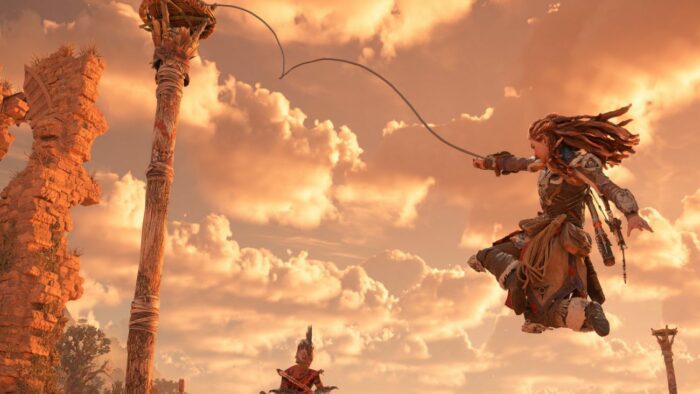
I’ve given some thought to why I had such a difficult time completing it, and I think I’ve come up with my answer. Two, in fact. First off, there’s the bloat. The overwhelming nature of Horizon’s open world and all the completable activities left me wishing for a more streamlined experience. Then there’s the fact that the game left me cold emotionally. It wasn’t until the halfway point of the narrative that I was engaged with the storyline. These two reasons intertwined with each other and the narrative push of the main story wasn’t enough to keep me interested in the myriad number of quests that I kept encountering. I got burnt out.
I’m happy to say that I don’t see that happening with Forbidden West.
The story starts off in media res, with Aloy searching for a backup to GAIA, the AI intelligence that both reconstructed the world and gave birth to her. After exhausting all but one of her leads, she is just barely hanging onto hope. Varl, one of Aloy’s Nora friends from the last game, joins her in the beginning stages of this quest. This serves as the pre-pre tutorial of the game and takes a couple of hours to clear. After that, players are dumped into the true beginning area of the game, The Daunt.
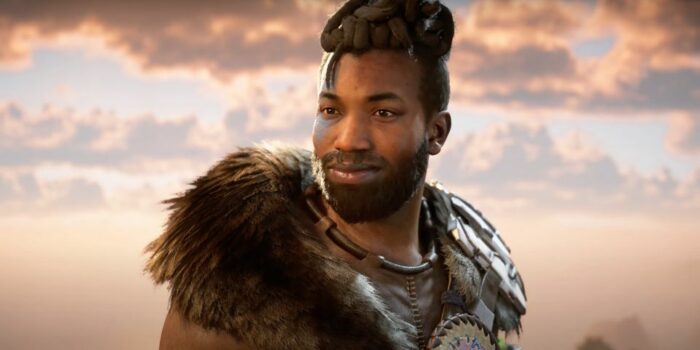
Before I talk about any of the content introduced here, I’d like to get one aspect out of the way. This game is flat-out gorgeous, especially on the PS5. As Aloy rides a cart that will drop her off in the Daunt, gamers get a view of the valley. The mountains serve as a beautiful backdrop in this scene, and they are only a tease of the visuals that greet the players when they land. The foliage pops in vibrant colors of red and yellow, the water reflects its surroundings; it flows realistically and drips off of Aloy when she swims. And speaking of Aloy, the detail in her hair and the way it sways back and forth is downright entrancing.
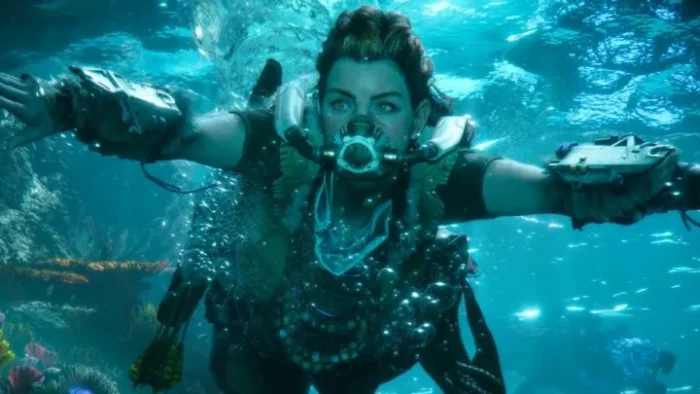
Aloy isn’t the only character who has received an upgrade in the visual department though. The cast of characters that I met in the Daunt were similarly engaging, both in their facial design and animation.
This stands in stark contrast to the original game. Whereas Zero Dawn’s character models could appear lifeless at times, these are fully captivating. Body language, accompanied by cinematic angles and camera shots, communicate a lot about their feeling and motivations, which helps me to get even more engaged with the side quests and errands they send Aloy on.
And these quests already have more meat and intrigue to them than those in Zero Dawn ever did. I’m usually not one for politics (they’re hard for me to follow), but the early mishmash that Aloy finds herself in at the first settlement, Chainscrape, is one that had me using all my wits to pay attention. No spoilers here, but there’s a particular character who is taking advantage of others, and his reputation gets around to all the townsfolk Aloy talks to; they even mention him when giving out their own quests. This creates a feeling of living in a moving, breathing, intertwined world. The quests explore some interesting thematic material as well. My favorite one explores the dangers of blind faith; a leader waits patiently for a vision in the cliffs, while his followers struggle to survive and hold their own down below.
The settlements that these characters live in are moving and bustling too. Everyone is doing something, whether that be cooking, drinking, or just hanging with other people. Not since The Witcher 3 have settlements felt this lively. And Like Witcher 3, Horizon Forbidden West also has an addictive minigame: Machine Strike.
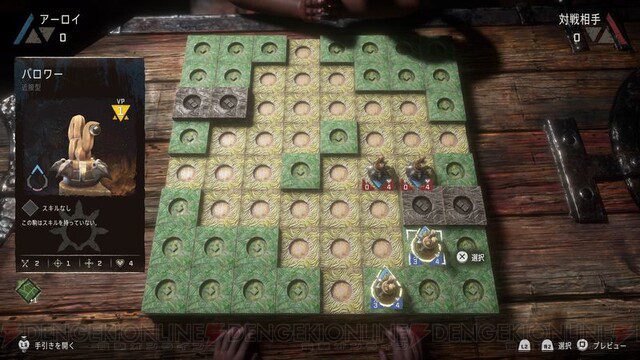
The game is introduced in a tutorial. There’s a board on which you place your machine pieces (representations of the monsters scattered throughout the land), and you move them in a battle against your opponent’s pieces in a fight to the death. The specifics are far too complicated to get into here, but I can see many players loving it. As for me, I’m having difficulty even getting past the initial challenges.
And now, for the good part, the combat. Look, I’ll be honest and forthright about this, I didn’t play the first game well. I charged into fights with my spear and spammed light and heavy attacks repeatedly like a madman. Don’t tell anyone, but I also might have lowered the difficult to “easy” and “story” mode on multiple occasions. I plan on playing this game differently, so I’ve decided to build my Aloy based on stealth. The game straight up encourages in the opening section, but that’s not the only valid way to play.
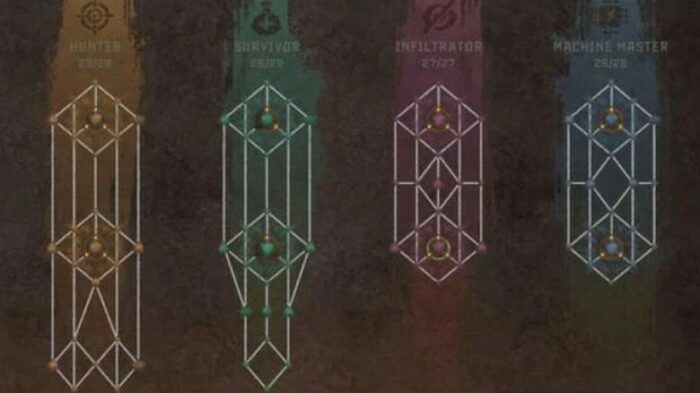
See, there’s an entirely new skill tree system, six to be exact. This differs from the original which had three trees, four with The Frozen Wilds DLC. These six trees are Warrior, Trapper, Hunter, Survivor, Infiltrator, and Machine Master. Warrior deals with physical attacks, Trapper with machine traps like trips and wires, Hunter with aimed weapons, Survivor with potions, Infiltrator with stealth, and Machine Master with skills relating to machines. The skill points are gathered mostly from completing quests and leveling up with XP, which you also get from finishing quests, so it would behoove you to do those as much as possible.
Some of my new favorite skills are found in the Warrior tree. It goes so far beyond just the simple light and heavy attacks from Zero Dawn. One I love is a move that allows you to build up energy on your spear while attacking, transfer it to your enemy, and shoot it with a well-placed arrow. There are also newly introduced combos that allow you to mix up heavy and light attacks. One of these allows you to break enemy blocks, a combo that I used a lot at the combat practice ring in Chainscrape. I’ve also unlocked other abilities in the Infiltrator and Survivor skill trees, both of which have me excited for future skills. There are even special skills called Valors, which allow you to gather energy for increased boosts, but you need to unlock all the skills around the Valor you want.
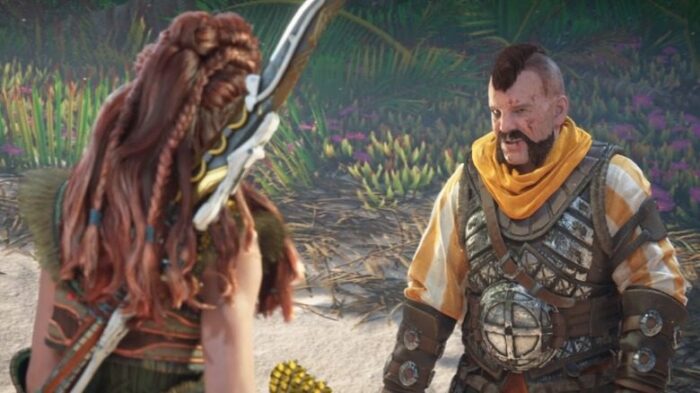
These skills come in handy when you’re exploring, too. Within the Daunt alone, I’ve uncovered secret caves, underwater caverns, and fortresses. My favorite location was a run-down hotel where I used Aloy’s new pull-caster to make my way into a locked-off room. Some of the other areas are closed off now, but I’ll definitely return to explore them later.
For now, though, I’m going to continue forging into the Forbidden West. I’m excited for the rest of the game, it’s surpassed the original and has engaged me from the get-go. I can’t wait to see where Aloy’s journey will take me next!
Note: A word of warning. If you haven’t played the original Horizon: Zero Dawn, I highly recommend you do so before taking on Forbidden West. The game has a lot of callbacks to the original, and it would be confusing and overwhelming for new players for sure.

